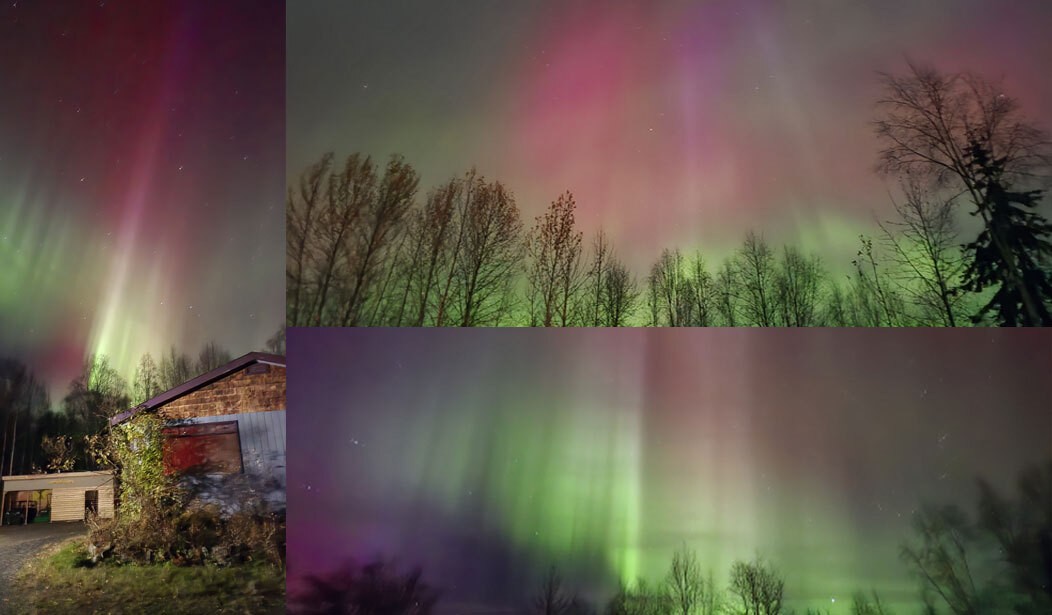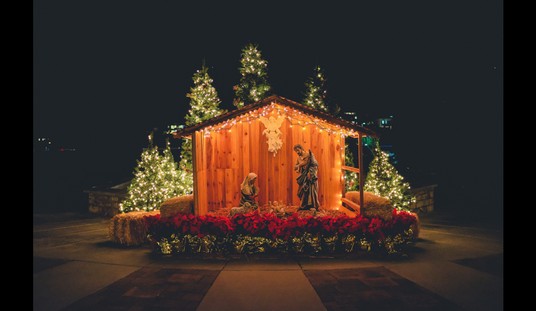We take the Aurora Borealis - the northern lights - for granted here in Alaska. We see them all the time in the darker half of the year; charged particles from the sun cause these amazing light shows, specifically when those particles hit the magnetic fields around the poles and spiral down towards the surface. I have spent time, mornings and evenings, bundled up against a below-zero chill, watching the auroras whip, wave, and flicker. I never get tired of it.
In the next few days, you folks in the northern tiers of the lower 48 may get a chance to see the auroras as well, as the sun has just spewed out a whole big burst of those charged particles, in an event called a coronal mass ejection, or CME.
Solar storms may bring colorful auroras to several northern U.S. states on Thursday night.
The sun burped out a huge burst of energy called a coronal mass ejection that’s currently on its way to Earth, prompting space weather forecasters to issue a strong geomagnetic storm watch. It’s expected to arrive between Thursday evening and Friday morning.
How bright the auroras are and how far south they are visible will depend on when the solar burst gets here and how it interacts with Earth. If the timing is right, it’s possible auroras will “quite likely spin up overnight,” Shawn Dahl, a space weather forecaster with the National Oceanic and Atmospheric Administration, said in an email.
Authorities are monitoring the situation, but do not anticipate major disruptions to radio or communications signals, said Dahl.
This, it seems, wasn't a major event, as coronal mass ejections go. A bigger one could wreak havoc on our electrical grid and communications systems, much in the same manner as a deliberate electromagnetic pulse (EMP) attack. Fortunately, the sun doesn't hit us with events on that scale very often, although it happened in 1989, when a CME hit parts of Canada, causing power failures in Quebec. A major event narrowly missed Earth in 2012, and then, of course, there was the Carrington Event in 1859, which caused a lot of damage to the telegraph systems, which were the internet of that time and the only real electrical grid in place in 1859. Today, that CME would have had much farther-reaching effects.
For now, though, we don't have that worry, just a beautiful spectacle that may be visible as far south as Chicago.
Auroras could be visible — especially in darker, rural areas — in Alaska, Washington, Oregon, Idaho, Montana, Wyoming, North Dakota, South Dakota, Nebraska, Minnesota, Iowa, Michigan, Wisconsin, New York, Vermont, New Hampshire, Maine and northern parts of Illinois, Indiana, Ohio, Pennsylvania and Massachusetts.
The moon is currently close to Earth and bright in the sky, which could make it harder to spot auroras. Northern lights could be visible on Friday night as well, depending on the solar activity.
This happens now and then.
Read More: Aurora Borealis, Shining Down on Dallas
On the Brighter Side: A Magnificent Natural Spectacle to Be Widely Visible Thursday Night
Some advice from an Alaskan, if you want to take in the lightshow:
Get out of town. Light pollution from street lights, yard lights, and the like lessens the experience. If you can get out in the country, the auroras will be more brilliant.
The moon is just now coming off full. If you can, catch the auroras before moonrise or after moonset. That won't be easy right now, but the bright moon likewise lessens the show.
Watch the weather forecast. Clear nights that are best for aurora viewing tend to be cold.
And, of course, enjoy the show. It's a neat experience, and yes, it's one that we kind of take for granted here in the Great Land. But we're perfectly happy to share.
Editor’s Note: The Schumer Shutdown is here. Rather than put the American people first, Chuck Schumer and the radical Democrats forced a government shutdown for healthcare for illegals. They own this.
Help us continue to report the truth about the Schumer Shutdown. Use promo code POTUS47 to get 74% off your VIP membership.














Join the conversation as a VIP Member